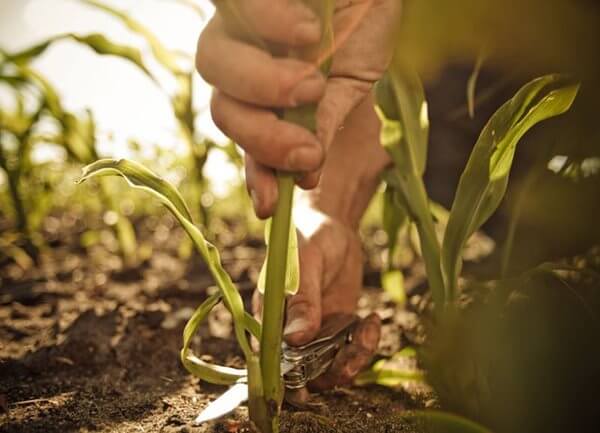Tissue Sampling Reveals Hidden Plant Hungers

Wouldn’t it be great if plants could tell us exactly what they needed for top performance? Unfortunately, diagnosing crop problems isn’t always easy, but there are tools to help us understand what’s happening within the plant.
Tissue sampling provides a nutritional profile that can show hidden hungers in plants even before they are visible. Ultimately, this information can help guide fertilizer programs, but the greatest value comes when real-time nutrient corrections can be made in-season to preserve yield. Here are some tips for getting the most out of tissue sampling this season.
Tissue sampling provides a nutritional profile that can show hidden hungers in plants even before they are visible. Ultimately, this information can help guide fertilizer programs, but the greatest value comes when real-time nutrient corrections can be made in-season to preserve yield. Here are some tips for getting the most out of tissue sampling this season.
- Timely sampling allows for action. Consider sampling after the crop is well-established, generally after the V3 stage for corn and soybeans. Sampling should continue throughout the season, especially ahead of key growth stages, to learn how crops are using nutrients as they grow and develop. Staying ahead of deficiencies allows for in-season fertilizer adjustments to avoid yield loss.
- Quality samples yield quality data. The tissue sampling data you receive from the lab is only as good as the sample you submit. Use the correct sampling procedure based on crop and growth stage. Your agronomist can provide specific guidance on when and how to tissue sample for best results. Choose random, healthy plant tissue (about the size of a softball) from throughout the field. One sample per 25 to 50 acres will help account for field variability and give more comprehensive results. Ship samples in a timely manner to avoid tissue deterioration before analysis.
- Use a reputable lab service. If you’re using a contract service to conduct sampling, be sure to ask where they send their tissue samples for processing and how long it will take to get results. Samples taken with the NutriSolutions 360® system by WinField United are sent to accredited labs that follow strict protocols and procedures for analysis. SureTech Labs in Indianapolis runs many of these samples in their new, state-of-the-art lab. Their recent expansion allows processing of more than 2,000 tissue samples per day, and streamlined processes have improved quality and efficiency. Testing results are generally available in less than a week. The quick turnaround allows for in-season adjustments before critical plant growth stages.
- Know how to interpret results. Each lab will report results differently, so make sure you know how to interpret findings. WinField United accredited labs feed results into the NutriSolutions 360® reporting system. These reports contain three parts that include a ratio balance of nitrogen to potassium and sulfur, a radar chart that visually displays nutrient levels, and suggestions and product recommendations based on results. Consult with your local agronomist for help with interpreting reports and for recommendations on specific actions to increase fertility.


